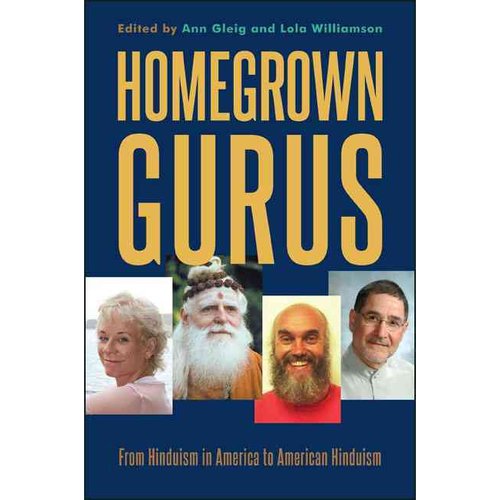The title of the new book Religion and Innovation (Bloomsbury, $37.95), edited by Donald A. Yerxa, would no doubt be dismissed as a glaring oxymoron by new atheists and other strong secularists, who argue that religion serves the cause of progress only by accommodating it or, more typically, getting out of its way. But Yerxa and the book’s 14 contributors attempt to make the case that throughout history a wide range of religious movements and organizations have contributed to significant changes in everything from politics to scientific and legal and artistic life. Some of the book’s arguments are clearly theological in nature. One chapter argues that scientific progress itself will revive the need for religion, largely because it allows humans to control more and more of the world, making them more morally accountable and prone to guilt.

More empirical chapters include archeological case studies of Mesoamerican religions suggesting that they served conservative as well as innovative roles, such as in the formation of cities, new kinds of architecture, and new uses for psychoactive substances. RW readers may be more interested in the contributions on contemporary innovations, notably economist Rebecca Samuel Shah’s study of the role of evangelical missions to the Dalit (or “untouchable”) caste in India. Such practices as tithing create an innovative break from tradition that allows the poor more self-control over their finances, encouraging “future-oriented patterns of expenditure and savings.” A more speculative chapter looks at a city planning project for a future Chicago informed by classical humanist urbanism and Catholic metaphysics and social teachings.
- Homegrown Gurus (SUNY Press, $26.95), edited by Ann Gleig and Lola Williamson, documents the shift in American Hindu leadership from its immigrant Indian beginnings to a new generation of largely American-born gurus and their networks. The editors make the point that these gurus are part of a third wave of Hindu leaders in the U.S. The first wave took place more than a century ago when 19th century leaders from India such as Vivekananda came to the U.S. to introduce Hindu teachings, while the second wave was the result of the 1965 Asian immigration act. The home-grown leaders, represented by such figures as Ram Dass (Richard Alpert), Swami Rudrananda (born Rudolph Albert), and Sivaya Subramuniyasami (born Robert Hansen), are mainly converts who span the “traditionalist”/“modernist” spectrum much more than the earlier waves of gurus, who tended to see their role as modernizing Hindu traditions to appeal to American seekers. The “homegrown” gurus are eclectic enough to be called “postmodern” by Gleig and Williamson, but they seem to defy labels, as they include Master Charles, who has developed a form of high tech meditation using sonic waves that are fed into the meditator’s ears through earphones, and Subramuniyasami, who moved from “New Thought” and New Age teachings to embrace orthodox Hinduism and become the satguru (true guru) of 2.5 million Tamil Sri Lankans (and founded the magazine Hinduism Today).The contributors show how it is not unusual for Indian Hindu gurus to embrace modernist practices and teachings and appeal to Euro-American followers, while converts are reaching Indians with more ritual-based forms of the religion. And then for something completely different, what Philip Charles Lucas calls “Neo-Advaita” de-emphasizes Hindu traditions almost completely and repackages them as therapeutic and syncretistic spiritualities, even drawing on Christian themes, the most notable figure being Eckhart Tolle. Some of the chapters also look at the guru sex scandals that broke out in the 1980s and 1990s, which led to some groups de-emphasizing strong guru-follower relationships and adopting more democratic models. The editors conclude that the American Hindu situation is similar to the fragmented state of Buddhism in the U.S., only more so—one marked by multiple interpretations of tradition, increasing pluralism, and mixture of various forms of modernism and traditionalism.
- The result of a three-year interdisciplinary project, Democracy, Culture, Catholicism (Fordham University Press, $35), edited by Michael J. Schuck and John Crowley Buck, focuses on the Catholic Church in Lithuania, Peru, the U.S., and Indonesia and how it relates to the development and maintenance of democracy in these countries, although there is some attention given to Catholic countries in general. Political scientist Samuel Huntington wrote of a “third wave” of democracy consisting mainly of Catholic countries making this transition, and the most interesting parts of this often disjointed book explore this dynamic in these four societies and beyond. Peter J. Schraeder presents a study confirming that a democratic transition has taken place in Catholic countries; using data from Freedom House, Schraeder finds that whereas only 15 Catholic countries could be classified as democratic in 1973 (the year designated as the beginning of the third wave of democratization), by 2013 “an extraordinary 35 Catholic countries had emerged as democracies.”Schraeder also asks “what happens after the Catholic Church in a predominantly Catholic country has successfully pressured an authoritarian state to democratize?” He cites data showing that the higher the level of democratization in predominantly Catholic countries, the lower the level of political restrictions on religion. The data also suggests that the higher the level of democratization in these countries, the greater the level of state involvement in religious legislation, though the book’s case studies complicate the picture. After significant democratic activism in these and other Catholic countries—including predominantly Muslim Indonesia and religiously pluralistic America—the church faces new challenges. The level of Catholic democratic activism has decreased in all of these countries due to conflict between conservative and liberal Catholics (in the U.S.); new political actors and parties less amenable to traditional social justice concerns (in Lithuania); new kinds of secular and populist competition with the church (Peru, Venezuela, Equador, and Bolivia); and a more inward stance due to outside pressures (Indonesia).

